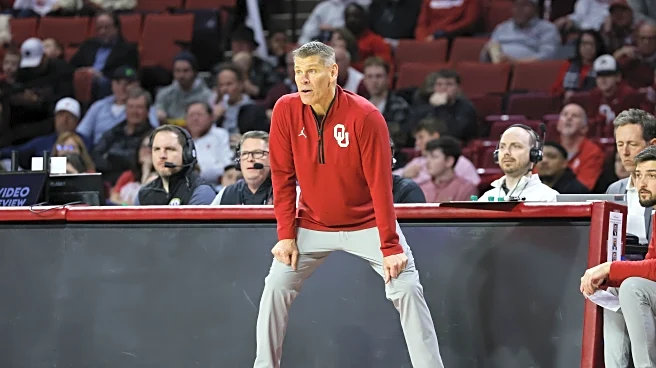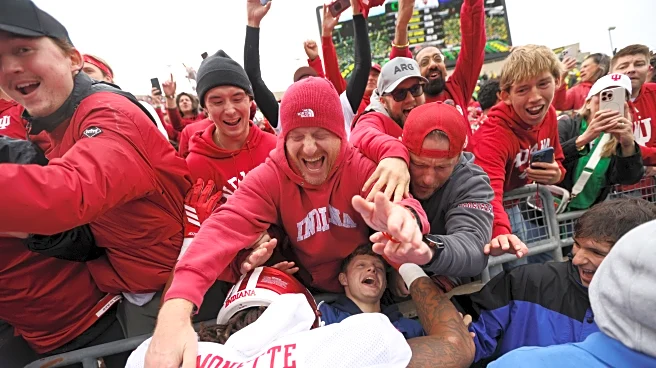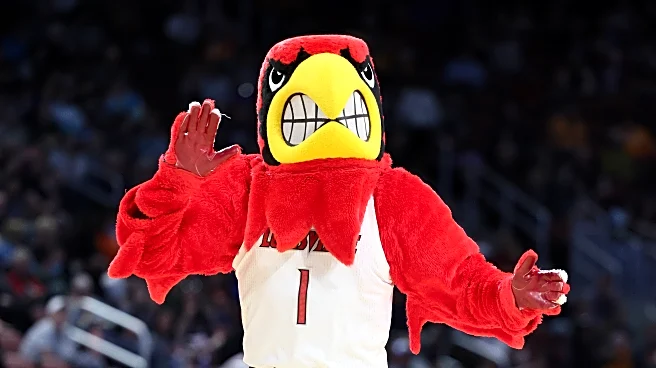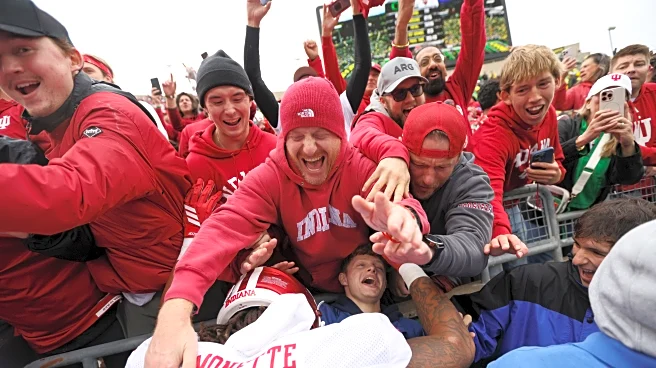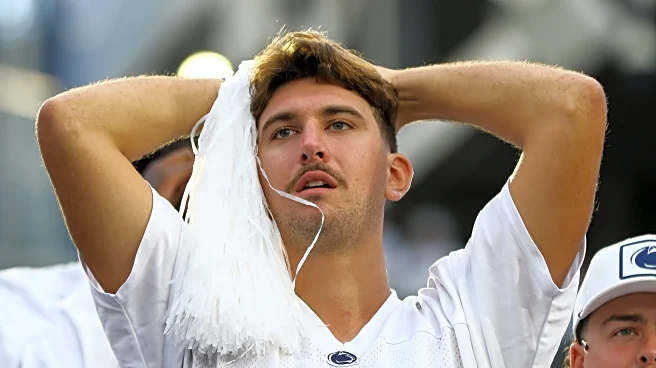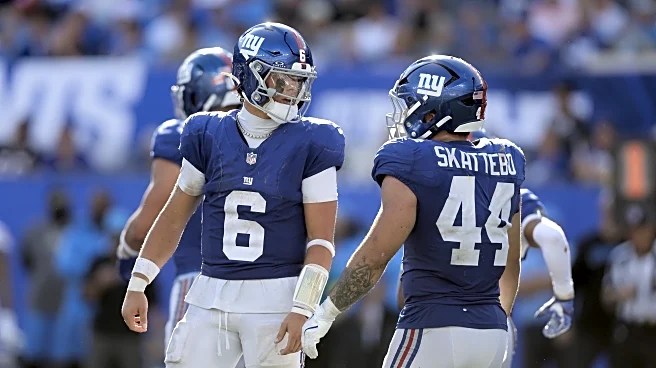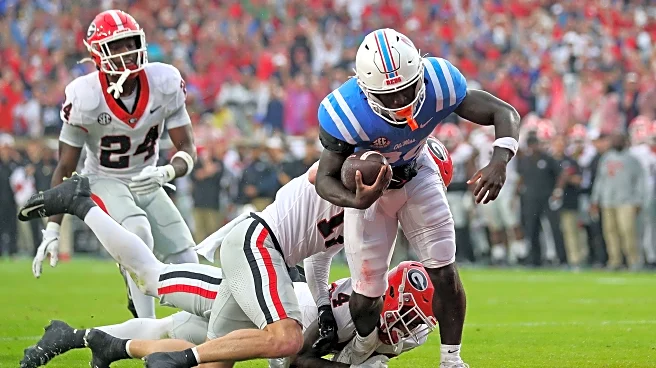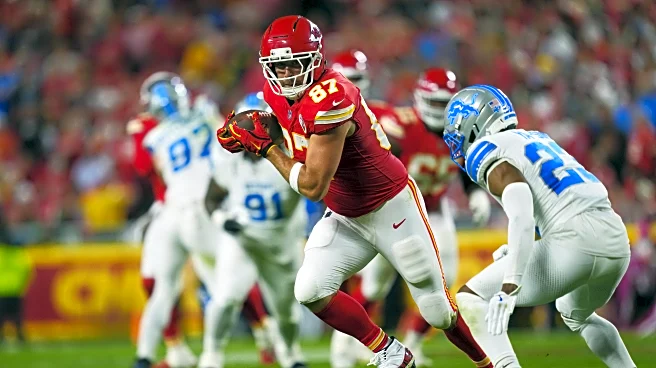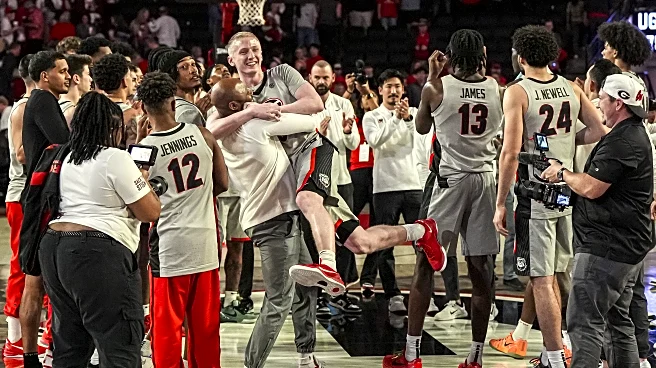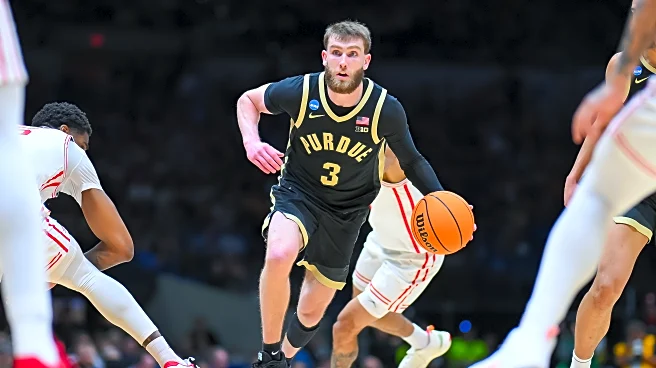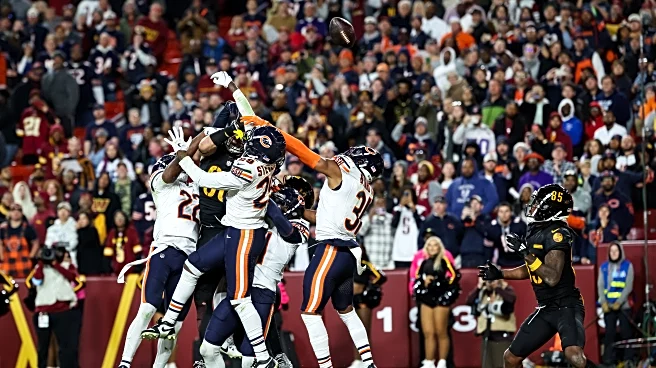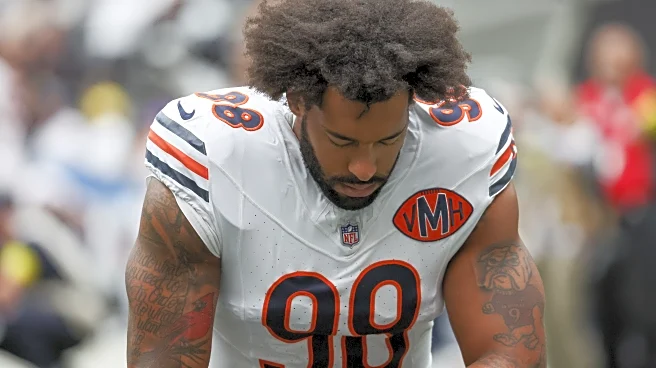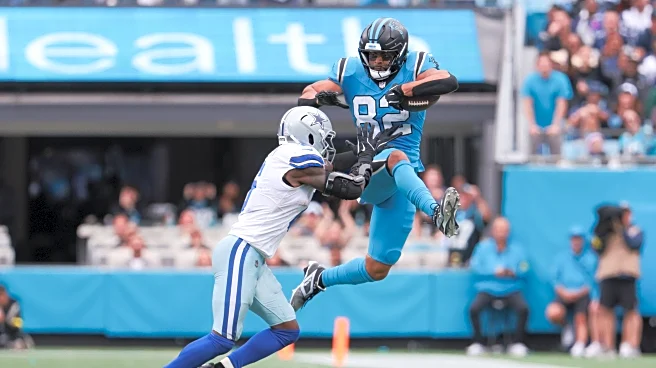Last season when we previewed the Oklahoma Sooners the outlook within the league wasn’t great, but there was a clear path forward for a team that could spread the floor, attack the rim, and spray the ball around for open three point looks.
I don’t think anyone foresaw exactly the type of player Jeremiah Fears would turn into, but the approach worked. Oklahoma, who had a mismatched roster of portal castoffs, centered their three point shot making around Fears and Jalon Moore’s ability to break down
defenses and attack the rim.
But the SEC was so unforgiving that even a good process and healthy approach was trucked by the sheer inhumanity that was the ‘25 SEC conference season.
OU didn’t line up murders row in the non-conference, they had one of the weaker out of conference schedules in the league, but they did beat Providence, Arizona, Louisville, Oklahoma State, and Michigan all in the non-con. They finished 13-0 and ranked after the non-conference schedule wrapped up, despite the analytics still showing some skepticism. The Sooners would open league play 0-4, and were 3-10, before winning three of their last 5 games and doing just enough to secure an NCAA berth.
The Sooners built a fun team and then ran into a wall once they hit the SEC. From 13-0 to 20-14. That’s a rough second half of the season. But with an infusion of NIL money, and some splashy moves in the portal, the Sooners could be a dark horse in the league this year.
Previous SEC Previews
- 13. Ole Miss Rebels, 7-11
- 14. Georgia Bulldogs, 6-12
- 15. South Carolina Gamecocks, 4-14
- 16. LSU Tigers, 3-15

Oklahoma Sooners
- Last season: 20 – 14 (6-12 in conference) #40
- The Masses Prediction: 12th in conference, 6.86 – 11.14
- SEC Media: 12th
- Analytics Average: 13th in conference, 46th overall

HEAD COACH: Porter Moser | 5th Season, 74-59
Call me crazy but I’m still a believer in Porter Moser as a basketball coach. And I think he proved as much last year. There was a point when I think a lot of teams would have turned to dust with the mounting losses the Sooners dealt with. Things just snowballed. They lost a game at home to LSU when they had a 5 point lead with 20 seconds to play. This is just after a trip to Missouri where they were soundly beaten, and were looking ahead to a trip to Florida, the eventual national champions. That sort of loss, and the one that would follow in Gainesville would sink most teams. They were 3-10 in the SEC and the NCAA hopes looked grim. But they returned home and beat Mississippi State, and nearly beat Kentucky were it not for a herculean last second shot by Otega Oweh, then fought hard and Ole Miss in a loss, beat the pants off Missouri and won at Texas.
Maybe it was a series of scotch tape and glue sticks that held the team together but they recovered from some tough punches. Moser gets credit for keeping the locker room together.
I don’t know what the long term future is for Moser in Norman, but he’s shown enough that with the right mix the Sooners will be able to play with anyone. Maybe the bigger question remains if Oklahoma is ready to commit to Men’s Basketball the way the rest of the SEC seems to have already.

There is a lot of consistency, for better or worse, over the last 8 years. 10 and 11 years ago the Sooners went to a Sweet 16 and a Final Four in back to back seasons, thanks in large part to Buddy Hield. Post-Hield the Sooners fell back a bit, but were restored by Trae Young. And since that 2017-18 season things have gotten a bit stagnant. Again, for better or worse.
Part of the success is from two very good coaches building a consistent product. The transfer portal has certainly impacted the Sooners, mostly for the bad. Both Milos Uzan and Otega Oweh are starring on other rosters, and Oweh notably called out OU’s lack of NIL investment. Young has recently stepped up to help out and things look a bit better this year, for whatever that’s worth.
LOST PRODUCTION
14th in % minutes, 88.78% | 14th in % points, 90.19% | 13th in
% oossessions: 90.09%
Last year’s build was a little bit wonky. It seemed like Moser and OU were operating with a lot lower NIL budget than the rest of the league and so it was full of a lot of up transfers. The most productive loss here is Jeremiah Fears who was selected 7th overall by the New Orleans Pelicans. Fears reclassified up to play in College last year, hoping to start his draft clock in a bit of a gamble. It turns out he was ready for the spotlight. There were a few bumps but Fears averaged 17 points and 4 assists, generating quite a bit of offense for the Sooners.
Also gone is Jalon Moore, a double digit scorer in each of his last two years at OU after beginning his career at Georgia Tech.


With the two primary scorers gone, Moser was sure to be more aggressive in the transfer portal this offseason. As I mentioned above, he was fortunate to have a bit more buy-in than he’s had in recently years and it showed with some notable additions.
The biggest addition by most analytics and transfer ratings was the addition of St. Joe’s point guard Xzayvier Brown. An explosive lead guard, Brown was the primary option for the Hawks last year when his production jumped from 12.7 points per game up to 17.6. Plus he was a workhorse, playing nearly 36 minutes a game. Brown is exactly the kind of workhorse guard the Sooners needed. He isn’t one for one with Fears, but he’s likely to be a bit more consistent.
Still in need of some scoring, Moser signed Tae Davis who blossomed as a scorer last season at Notre Dame. After beginning his career at Seton Hall, Davis transferred to the Irish and improved year over year. He did struggle a bit going against top tier opponents, his offensive rating suffered against Tier A teams (top 50 teams). In the ACC last year there weren’t many teams in the top 50, so there is some question if that’s an anomaly or a trend.
Then in need of shooting they signed Nijel Pack, for what feels like year 12, but in fact is year 6. Pack missed most of last season with an injury, but he’s a career 40.6% three point shooter who was an offensive focal point for a team that went to the Final Four a few years ago. Things obviously fell apart in Coral Gables, but Pack is still a valuable weapon.
With three key pieces in place, the Sooners could take a swing so they spent some money on former 5-star combo forward Derrion Reid. A high upside play, Reid dealt with injuries and underperformance during his one season in Alabama, but there’s hope a change in scenery could help bring out his untapped potential. The gamble on Reid figuring it out makes a lot of context with the rest of the roster.


Most of the preseason write-ups are likely to focus on a relatively strong starting lineup. There are some questions about what Moser will do at the post spot, because the Sooners could easily play small. One of the better players in EvanMiya.com projections is returning post Mohamed Wague, but it’s difficult to see Wague plugged into a larger role than he’s ever played. Last season he played a career high 27.9% of the minutes, or about 11.5 minutes. His BPR was the highest on the Sooners last year, and projected to be the second highest this season. Yet it’s still hard to see his taking over, even in a position of need.
The depth is going to have to come from two players the Sooners had on the shelf last year in Long Beach State transfer Jadon Jones and JUCO transfer Jeff Nwankwo. Jones was a reliable combo guard over four seasons at Long Beach State, and projects to be a solid rotational player. Nwankwo was one of the higher rated JUCO recruits available in the spring of 2024, and he originally committed to California before ultimately picking the Sooners. A dual sport athlete — he played football at Tulane for a year before going to Junior College to play basketball — Nwankwo has the frame to hold up on the wing, and was a high level scorer and All American while playing for Cowley County College.
There’s also Dayton Forsythe, who after a sturdy freshman season looks to take the next step. Forsythe played more and more as the season wore on, averaging over 14 mpg in conference play while scoring only 5.8 ppg. But he shot 50% from three on limited attempts, and could be a key role guy this season.
What the Sooners will get from the Freshman class is anyone’s guess, but Kai Rogers is is a big strong physical post presence with a soft touch around the rim. He should be the most ready to contribute. Andreas Holst is a thin, wiry big with a shooting touch beyond the three point line. Alec Blair is a big of a combo forward, maybe an undersized four man. He’s well skilled but likely needs a season of developing strength to defend at the SEC level.


You can usually see how confident a coach is by how they schedule, so Porter Moser must be feeling pretty good. The tournament selection committee hasn’t really punished teams for losing Quad 1 games, but they have rewarded teams for scheduling them, and even moreso for winning them. From that purview this schedule does makes some sense.
The road trip to Gonzaga might be crazy, but every other Quad 1 game is a competitive winnable game against a quality level team. Both Arizona State and Oklahoma State could be better than last year, but still likely inferior to where Oklahoma should be. And of the rest of the Quad 1 games only Marquette stands out as a potential, or perhaps likely, loss. An 11-2 non-conference record is certainly possible, and if that’s the case Moser is walking into conference play with possibly two quad one wins and two quad two wins.
Then the Sooners conference slate will just tack on additional quality wins all over the place. The more you win, the better your resume looks.
THE RULING
Of all the teams we’ve profiled so far the Sooners have the largest range of outcomes. In order to exceed these meager expectations, I think they need a few things to go their way. But it’s certainly possible.
Looking at the knowns, you have a consistent lead guard and playmaker in Xzayvier Brown, an undersized but high level shooting off guard in Nijel Pack, and then two versatile and athletic forwards in Derrion Reid and Tae Davis. Looking at Jadon Jones, Jeff Nwankwo, and Dayton Forsythe, at the least you have some solid level wings.
The unknowns? The frontcourt.
Enough so that it’s possible, or even likely we see a hefty amount of small ball with Davis or Reid trying to guard fives, and that’s a tall task for two players who fancy themselves more on the wing. Davis was even more of a primary ball handler for the Irish, having run over 100 possessions as a handler in a pick and roll, per Synergy. That was enough to be the second most possessions of usage, so he’ll fit right in with Brown whose primary action was as a pick and roll handler.
Expect a lot of pick and rolls, I guess. Moser imported 275 pick and roll handler possessions with just Davis and Brown alone. Pack ran 132 such plays two years ago at Miami, and another 44 in just 9 games last year. Reid is more of a transition and spot up and attack closeouts type, so someone else is going to have to set some screens.
Which brings us back to the front court. Will Moser turn more to Wague? Who, again has never played more than 30% of the minutes. Will he rely on a freshman like Kai Rogers or Andreas Holst to fill the need? Maybe Kuol Atak is ready to go after a redshirt year?
It’s easy to like the top of this rotation, and it’s really hard to like the bottom of it. And it’s really for those reasos they’ve slid down the rankings a bit.
But if they get sound, or better, post play the Sooners could be a real dark horse in the SEC.
My Results: Oklahoma Sooners — 12th in Conference, 8-10
About the preview: a number of respected basketball bloggers were asked to submit one pick for the entire league schedule game by game. The game by game option allows us to account for the unbalanced schedule when addressing any kind of power rankings. Each set of picks are reflected in “the Masses” picks. Included in “the Masses” are various SEC media members who made picks at my request, as well as additional credit given to the analytics projections.
If you’d like to submit your picks, click here for the Google Form we used. If you want to know your results, send me an email.
Additionally, instead of relying solely on KenPom.com for the analytics site projections, we’re taking the average of the four main sites (EvanMiya.com, BartTorvik.com, Haslametrics.com, and KenPom.com) to give a closer consensus picture. These are weighted a touch for reliability.
The projections: This is new! In an attempt to be as accurate as we could be we increased the amount of analytics used to make individual projections which influenced how these teams slotted in order. Matt Watkins used an in-depth method for projecting the entire SEC transfer list, we then mixed in EvanMiya.com’s BPR projections, and BartTorvik.com’s preseason individual projections to round out the expected production based upon how each coach routinely uses his rotations.
GLOSSARY
* – an asterisk denotes a known walk-on player
GP – Games Played
%min – percentage of total available minutes played, does not account for time missed due to injury
%poss – percentage of team possessions the player is responsible for ending a possession, whether by making a shot, missing a shot not rebounded by the offense or committing a turnover. For returning players this is noted as a percentage of total team possessions. For newcomers it was total possessions when that player was on the floor, better known as Usage Rate.
ORtg – Offensive Rating, similar to a points per possession but averaged out over 100 possessions. So it’s how many points a player would score if they were responsible for 100 possessions.
BPR – Bayseian Performance Rating, a single player efficiency metric created by Evan Miyakawa to determine both offensive and defensive impact when a player is on the floor.
PAR – Points Above Replacement, a Rock M+ proprietary rating measuring projected on-off impact adjusted for time on the floor.
PPG – Points Per Game, RPG – Rebounds Per Game, APG – Assists Per Game: All traditional statistics used to measure player production.
For newcomer player rankings, we used EvanMiya.com’ s rankings for transfers, and 247sports.com ‘s Composite Rating for Freshmen and Junior College signees.
